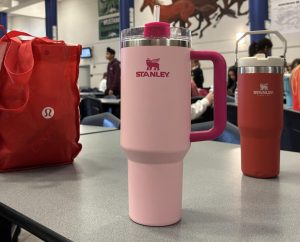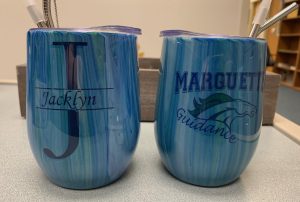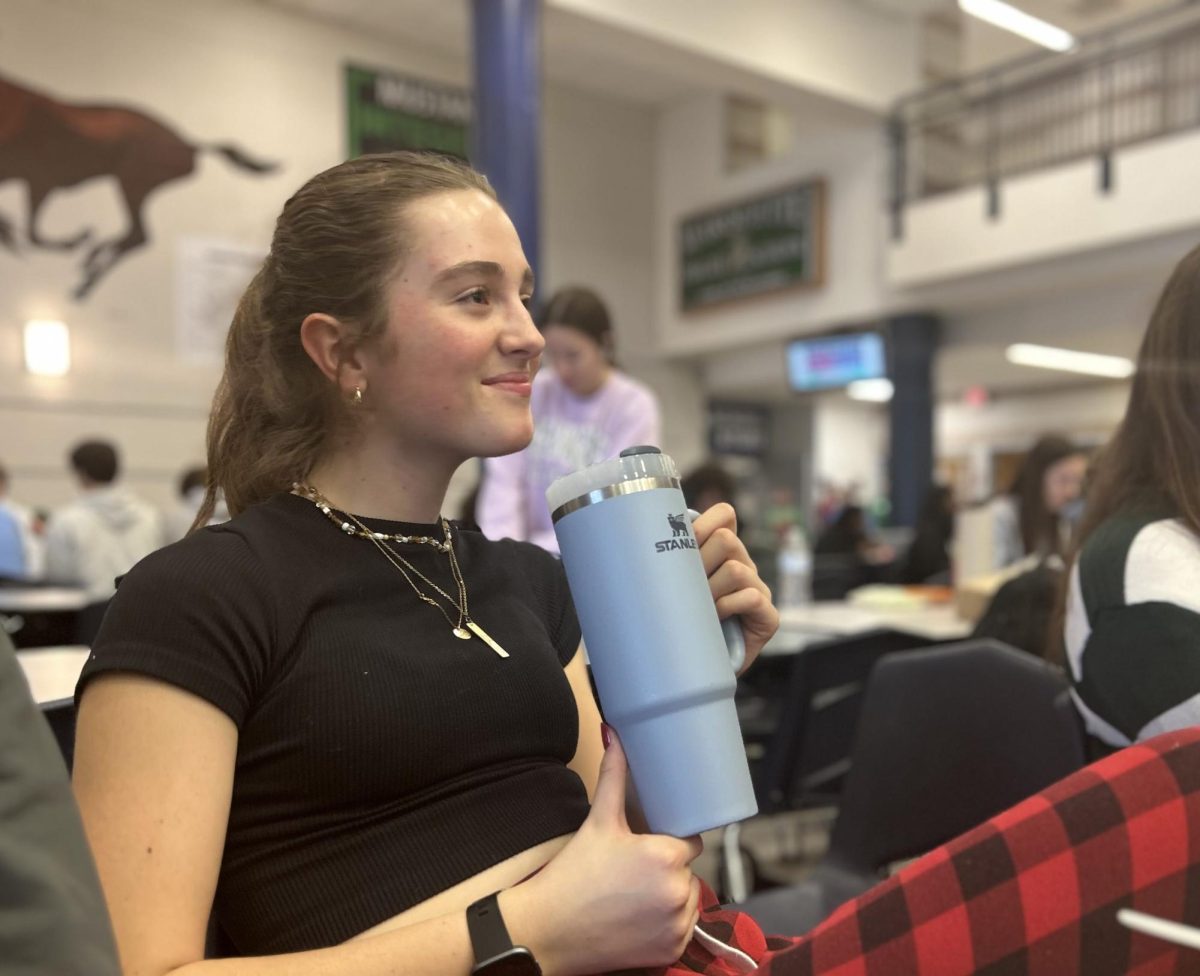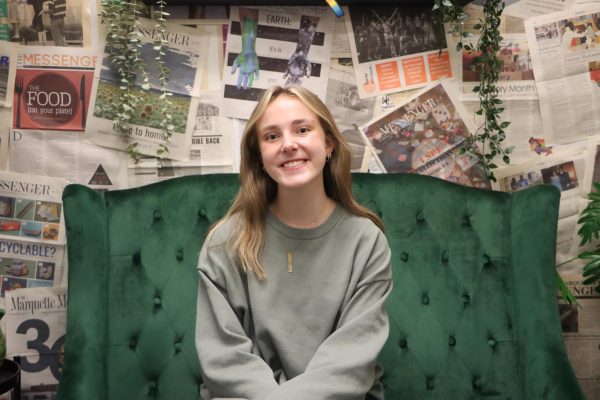Founded in 1913, the Stanley cup brand initially targeted workmen and participants in outdoor activities. Yet, over the past six years, it has become one of the most virally used drinkware brands today.

The skyrocket in popularity launched in 2017, with the help of three female social media influencers, Linley Hutchinson, Ashlee LeSueur and Taylor Cannon, who advertised and vastly helped grow the brand, mainly by expanding consumer focus to women. This is according to Retail Dive who also stated that last year, Stanley saw a 275% year-over-year increase in Quencher sales and experienced a 215% increase in its best-selling category, hydration.
The brand has grown from $74 million in revenue to $750 million, according to USA today.
At MHS
Over the past year, the Stanley company has firmly planted itself as the No. 1 drinkware brand in North America and at MHS.
Arden Conners, senior, purchased her first Stanley last Christmas, right around when they started to become popular at MHS.
“I decided to get one, honestly, because everyone else had one,” Conners said. “I love water so I decided I had to get a Stanley and see what the hype is about. I absolutely love my Stanley.”
Connors has two Quenchers, a 40 oz. and 30 oz, one pink and the other blue.
“I love having both because I can use the bigger one when I want more water, but not have to haul around the giant thing when I want less,” Connors said. “With my larger Stanley, I can go for longer without filling it up which is awesome because with my previous water bottles like my Yeti it was non-stop filling it up and I don’t have to do that anymore which is great.”
Connors said she loves the handle of Stanley Quenchers, which she prefers over the smaller handles on the top of Hydro Flasks. Connors had three Hydro Flasks before purchasing her first Stanley and now undoubtedly prefers her Stanley.
“The Stanley also keeps the water so cold and the ice can last for so long,” Connors said. “I’ll put ice in before bed and it’ll be there when I wake up.”
Witt Tatum, junior, purchased his 30 oz. Flip Straw Stanley Tumbler because he wanted an insulated water bottle that could keep ice lasting throughout the whole day, unlike the plastic bottles he had been using.
“I wanted to get a Stanley specifically because I loved the color options and the design of the bottle,” Tatum said. “It’s really easy to hold with the handle on top and it’s very durable.”
Tatum said he is satisfied with his purchase; however, sometimes his straw will get suctioned onto the bottom of the cup preventing water from flowing through the straw.
“I’ll have to take the lid off and screw it back on in order for it to work again,” Tatum said.
Getting Personal
With this rise in the popularity of Stanley’s, implementing different designs onto cups has also become a popular method of personalization.
Kevin Sharitz, technology teacher, personalizes cups such as Stanleys by using an engraving machine located in the technology classroom that uses a laser to cut away at the powder coating, exposing the cup’s interior steel base.
Sharitz said he will find the circumference of the Stanley, measure and pin point where the design will be engraved on the cup, find the proper distance between the laser and the cup, and make sure the laser can completely cut through the powder coat accurately. Once the setup has been checked over, the engraving process can begin.
“You hit a button to start the laser machine, and then really it works like a printer, printing a design onto a surface,” Sharitz said.
Anna Speaker, registrar, began personalizing cups as a hobby during the COVID shut down when she said she finally had the time to take on this new project.
“I had been watching paint flooring videos for about a year and I really wanted to try this, so once I had the time, I started doing it and then didn’t stop,” Speaker said.
She now also personalizes Stanleys using acrylic paints and alcohol inks.

For the acrylic painting, Speaker first tapes up any spots of the Stanley she doesn’t want the paint to touch, such as the logo, and then adds a paint primer onto the cup. Next, she adds an assortment of paints into a container, alternating which colors she pours to create layers of color she then pours onto the cups. After pouring, she takes off the tape and finishes the work off with a resin coating.
Using the alcohol inking technique, Speaker starts off with a white cup in which she adds the paint primer and then the resin. Afterwards, she puts the cup on a cup turner and then drops or sprays ink onto the cup. The ink blends while spinning, giving the design a watercolor effect.
Another way she personalizes a cup is using Waterslide Decal Paper to add images onto the designs.
Speaker prints the image onto the paper then sprays it with Plasti Dip Glossifier. Afterwards, Speaker soaks the paper in water, allowing the sticker to separate from the paper, which she then puts on the cup, adding a resin coat on top of that.
“This hobby is something I think is a lot of fun to do,” Speaker said.
Speaker said, however, designing the cups through the acrylic painting and alcohol inking techniques does prevent the cups from being dishwasher safe.






